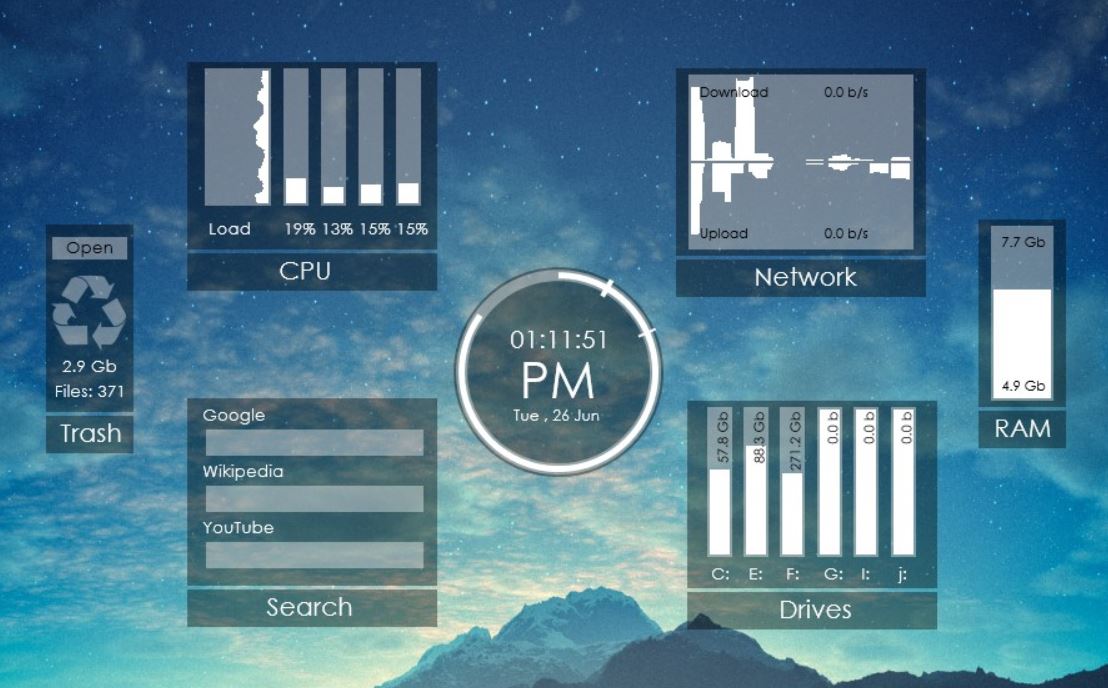
- CPU TEMP MONITOR HOW TO
- CPU TEMP MONITOR SOFTWARE
- CPU TEMP MONITOR WINDOWS 7
- CPU TEMP MONITOR WINDOWS
CPU TEMP MONITOR SOFTWARE
To control the CPU temperature, one can use SpeedFan free software (for Windows), or lm-sensors (for Linux). Perhaps it’s time to replace cooler, or re-arrange hardware pieces etc., but it’s better to know of possible problems before they actually happen. This is why it is important to know the current CPU temperature and take measures if this temperature is too high.

Also, every CPU nowadays has built-in thermal sensors these sensors can be contacted to obtain the current CPU’s temperature and take whatever action could be required. There are hardware pieces, such as CPU coolers, designed to prevent CPUs from overheating.

Note that CPU not only heats itself, it also heats the motherboard it’s installed into – the thermal damage may happen to both the motherboard and other peripheral devices as well. If a CPU is exposed to higher temperatures, a variety of negative consequences may follow – resets, life-span reduction, up to CPU stopping functioning completely. This high limit is always specified for a given CPU model. There’s a known limit of temperature a CPU can sustain without taking damage. Simply speaking, the quicker is the CPU, the more cores it has etc., the more heat it radiates when working. Q: Should I bother monitoring my CPU temperature?Ī:Every CPU, when working, emits certain amount of heat. You can click and drag the edges to resize the Gadget or right-click on it to configure its settings.Is it necessary to monitor server CPU temperature, if it was working just fine for a long time, without any monitoring at all? You can also resize the Gadget by clicking and dragging the edges. Alternatively, you can double-click the icon in the system tray instead. Tip: If you have the Gadget open and minimise the main Open Hardware Monitor window, you can re-open it by double-clicking the Gadget. For example, you can disable the hardware names to reduce the size of the Gadget, you can also change the font size, set the Gadget to always be on top, and configure it to be partially transparent.

If you want, you can right-click on the Gadget to configure it a little further.
CPU TEMP MONITOR WINDOWS
Once you’ve performed both of these actions, you may need to minimise all of your open windows to find the Gadget on your desktop. Click “View” in the top bar, then click “Show Gadget”. To do so, click on “View” in the top bar, then click on “Show Gadget”. Once you’ve selected the temperature sensors you want to see, along with any other stats that you want to be included, you need to enable the Gadget. Right-click on the sensors you want to see and select “Show in Gadget”. This is because the hottest cores are the most likely ones to thermal throttle, or slow themselves down to prevent dangerous overheating. If you want to monitor your temperatures, its generally best to run a stress test to work out which temperature sensor ends up the hottest, and to then monitor that one. Your motherboard may also have a number of CPU temperature sensors. You may see multiple temperature readings for your CPU, typically each CPU core has its own temperature sensor as well as an independently positioned package sensor.

Tip: You can select multiple entries to display at the same time. The first is to right-click on the specific entries that you want to see on your desktop and click “Show in Gadget”. There are two things you need to do to display CPU temperatures.
CPU TEMP MONITOR HOW TO
How to display CPU temperature on the Windows 10 Desktop
CPU TEMP MONITOR WINDOWS 7
It also includes a feature that allows it to display these stats on the desktop in the format of an old school Windows 7 Gadget. One of the key bits of data that it can collect and display is the temperature readings from your CPU as well as your GPU. For example, it can track the clock speed of each of your CPU cores, as well as their utilisation rates. Open Hardware Monitor is a tool that monitors and reports a number of hardware statistics for your computer.


 0 kommentar(er)
0 kommentar(er)
